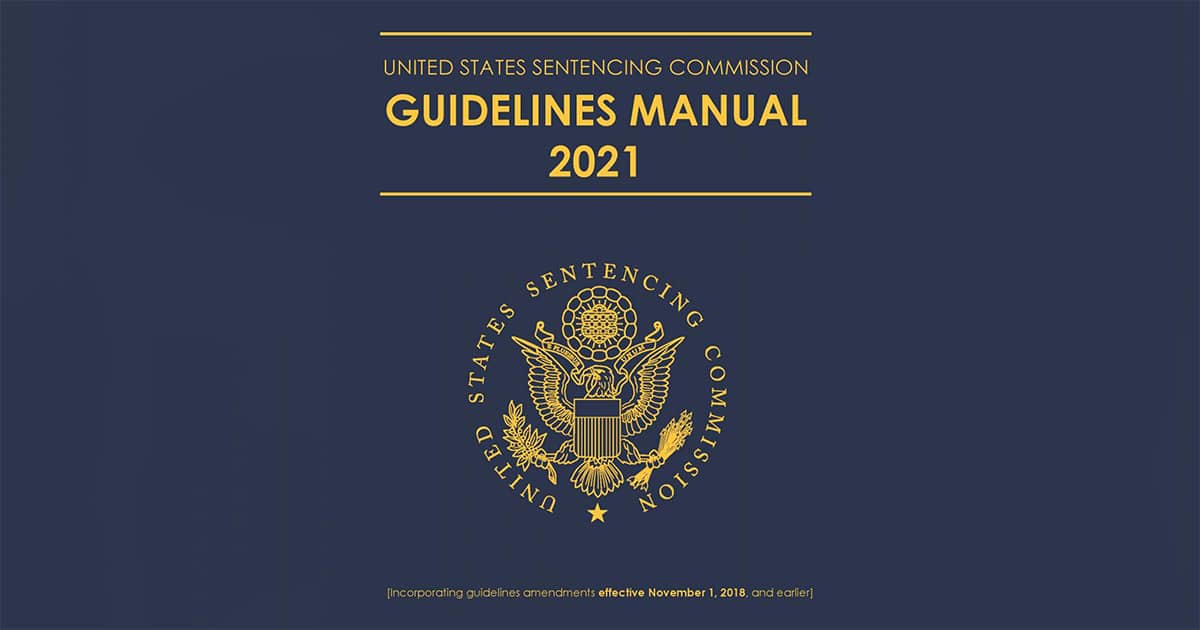Federal courts utilize the Federal Sentencing Guidelines to help them calculate sentences for those who have been convicted of federal crimes.
The federal sentencing guidelines previously severely limited the punishments that judges may impose in their courtrooms. Although the federal sentencing guidelines are no longer mandatory, they are still calculated as part of the sentencing process, and judges generally follow the guideline sentence ranges.
The official annotations to the 2018 Guidelines Manual were provided by the commission in July 2019.
We’ve done extensive study on a variety of themes connected to the federal sentencing guidelines, and we’ve successfully argued against the US Attorney’s office and the US Probation Office to secure favorable results in the interpretation and execution of the standards.
The rules are difficult to understand, and putting them into practice is even more difficult. Probation officers in the United States frequently make it appear that an application is simple when it is actually fairly hard and the outcomes are not always clear.
In the end, it’s the federal judges’ interpretations that matter, not the US Attorneys’ or Probation Officers’ interpretations. A federal criminal defense attorney can examine how your case fits into the guidelines and argue against the government’s viewpoint before the judge makes a sentence decision.
Watch Understanding Federal Sentencing Guidelines by Michael Santos
What Is the Criminal Background Check Score?
What Factors Go Into Determining a Criminal History Score?
For each person convicted of a federal offense (the “instant offense”), the criminal history score is a number of “points” that are tallied to determine the applicable criminal history category in the Sentencing Table of the federal sentencing guidelines. The criminal history category rises in importance as the number of points rises. For any given offense, higher criminal history categories result in harsher penalties.
When calculating a criminal history score, add three points for “any past sentence of incarceration lasting more than one year and one month.” Then you add two points for each previous sentence of at least sixty days in prison. Then you add one point for each additional conviction, up to a maximum of four points. Add two points if the crime was committed while you were serving a “criminal justice term.” Finally, for any preceding sentence arising from a conviction of a “crime of violence” that did not get any points because it was counted as a single sentence, add one point up to a maximum of three points.
There are, however, a number of exclusions, limitations, and other enhancements to take into account while calculating this figure. In this article, we’ll go through a few of them.
When Do Convictions Become Too Old To Be Factored Into Your Criminal History Score?
A conviction is too old to be considered against you in determining your criminal history score in a few cases, according to the standards. These restrictions must be viewed in conjunction with the annotations detailing the sentencing guidelines and the federal case law that interprets them. No prior sentence imposed “within fifteen years of the defendant’s initiation of the now offense” is counted unless it was more than 13 months in length and “resulted in the defendant being jailed” at any point during the fifteen years preceding the instant offense.
Any past sentence imposed more than ten years prior to the “commencement of the immediate offense” is not considered. The applicable time duration for some sentences resulting from juvenile (under the age of 18) offenses is specified in Section 4A1.2(d)(2) of the guidelines.
How Do You Figure Out What Time Period Applies?
In United States v. Arnold, the Fifth Circuit established explicitly its rule for calculating the appropriate time period:
Use the following dates to determine the applicable time period: I in the case of an adult term of imprisonment totaling more than one year and one month, the defendant’s last release from incarceration on such sentence (see 4A1.2(e)(1)); (ii) in the case of any other confinement sentence for an offense committed before the defendant’s eighteenth birthday, the defendant’s last release from confinement on such sentence (see 4A1.2(d)(2)(A)); (ii
What Convictions Aren’t Taken Into Account While Calculating Your Criminal History Score?
Convictions for the following offenses are not counted:
- Violations of fish and game laws
- Hitchhiking
- Misconduct while a minor and truancy
- Infractions of local ordinances (except those violations that are also violations under state criminal law)
- Loitering
- Infractions of minor traffic laws (e.g., speeding or running a stop sign)
- Intoxication in public
- Vagrancy
What Time Does the “Immediate Offense” Begin?
For the purposes of the federal sentencing guidelines, the Fourth Circuit Court of Appeals defined “commencement of the instant offense” as follows:
…the Guidelines expressly state that the sentencing court should consider “any relevant activity” in determining the date of the “commencement of the instant offense” for purposes of calculating the 15-year time period. Commentary on U.S.S.G. Sec. 4A1.2 (n.8). “Relevant conduct” is defined as “all activities… done [or] facilitated… by the defendant,” as well as “all reasonably foreseeable acts and omissions of others in furtherance of the [conspiracy]” that occurred “in preparation for that offense” in the case of a conspiracy. Section 1B1.3(a)(1) of the USSG (emphasis added).
This broad definition of “relevant conduct” encompasses activities that took place before the indictment’s “start date” for the charge. See United States v. Strachan, 968 F.2d 1161, 1163 (11th Cir.1992) (stating that relevant conduct includes “that conduct which is not formally charged or adjudicated”); United States v. Strachan, 968 F.2d 1161, 1163 (11th Cir.1992) (stating that relevant conduct includes “that conduct which is not formally charged or adjudicated”).
As a result, in determining the date of the “commencement of the instant offense” under Sec. 4A1.2(e), courts are not limited to the allegations in the indictment; rather, sentencing courts may consider preindictment activity to determine the offense’s beginning date, and then use that date to calculate the time period for which prior sentences are counted.
See United States v. Harris, 932 F.2d 1529, 1538 (5th Cir.1991) (holding that “pre-indictment activities may properly be considered when determining the applicability of section 4A1.1(d) or (e)”); United States v. Eske, 925 F.2d 205, 207-08 (7th Cir.1991) (holding that the sentencing court properly used a date preceding the starting date alleged in the indictment to (holding that the district court was not bound by the starting date of the offense alleged in the indictment for purposes of calculating criminal history points).
The United States Sentencing Commission’s website has the Federal Sentencing Guideline Manual.
What Is the Definition of a Downward Departure?
A downward departure is a federal sentence imposed following a conviction in which the federal judge deviates from the recommendations and imposes a sentence that is shorter than the guideline penalty in all other respects. This is only done in response to a government motion under the guidelines’ 5K1.1 (Substantial Assistance to Authorities).
Legal citations: Sentencing Guidelines Manual of the United States Sentencing Commission, 2018. (with annotations)
Heath Hyde is Here to Help
We care about your freedom, your family, your future, and your life. That’s why we can’t emphasize enough how important it is to do your homework when choosing your criminal defense lawyer. There is no substitute for decades of jury trial experience.
If you want an ultra-experienced 1st chair lawyer that has tried over 350 State & Federal Jury Trials with a 90% success rate? Serving in 1st chair in over 100 murder cases, extensive Medicare Fraud experience having tried the largest case ever in the U. S. for healthcare fraud, Heath Hyde is the man you want when your life, freedom, and assets are on the line.
For a free and confidential federal criminal case evaluation, contact Heath@Heathhydelawyer.com or call 903.439.0000.






